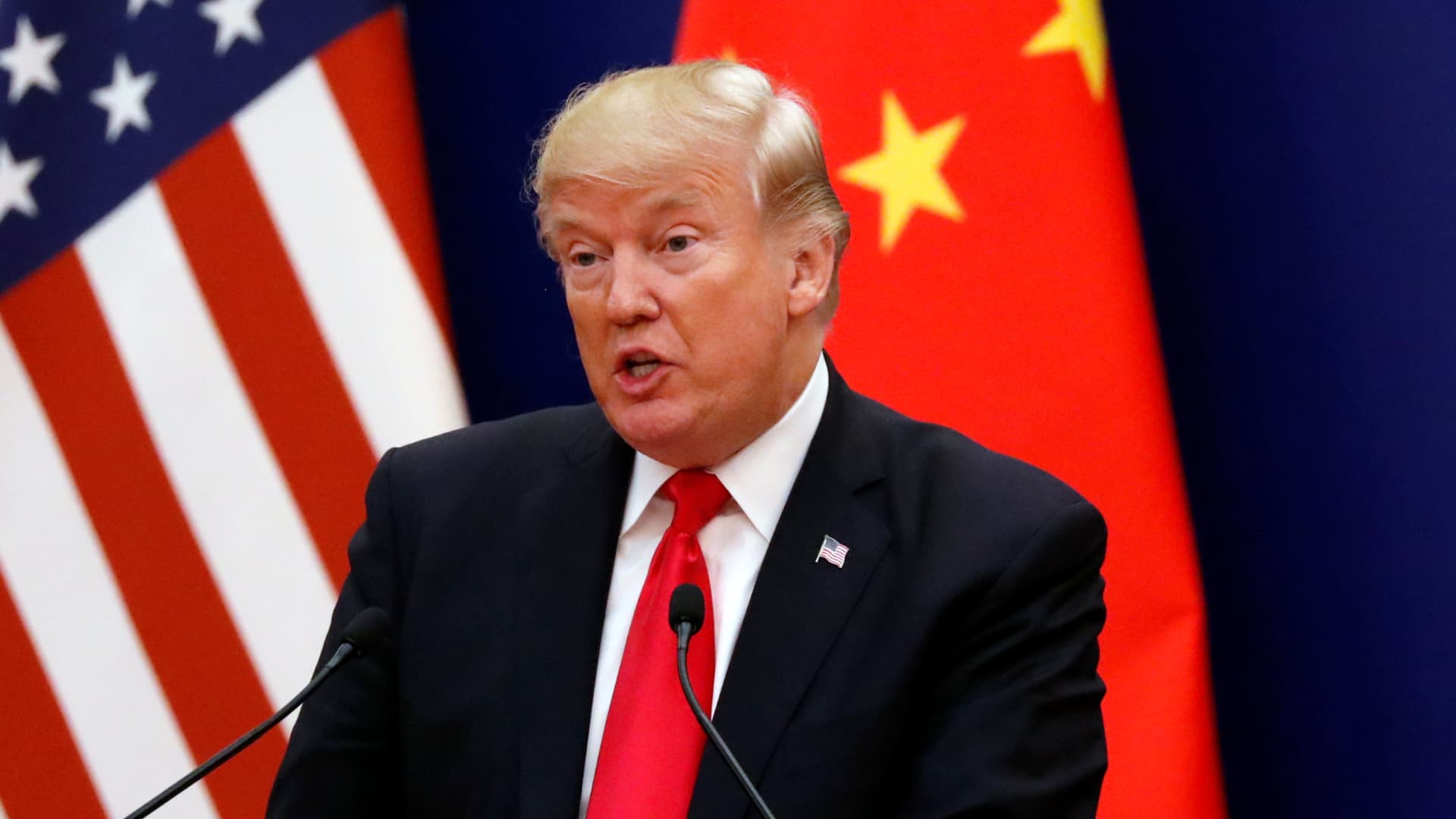
Donald Trump’s victory in U.S. elections has raised the specter of higher tariffs on China — but it may not be the only Asian country that faces this predicament, according to Goldman Sachs.
While the U.S. bilateral trade deficit with China has decreased somewhat since the Trump administration, deficits with other Asian exporters have risen significantly and may come under increased scrutiny, Goldman’s Chief Asia-Pacific Economist Andrew Tilton said in a recent note.
“With Trump and some likely appointees focused on reducing bilateral deficits, there is a risk that — in a sort of “whack-a-mole” manner–burgeoning bilateral deficits could eventually prompt U.S. tariffs on other Asian economies,” he said.
A tariff is a tax on imported goods, but it isn’t paid by the exporting country. So U.S. tariffs will be paid by companies looking to import products into the country, raising their costs.
“Korea, Taiwan, and especially Vietnam have seen large trade gains versus the U.S.,” Tilton observed, adding that Korea and Taiwan’s positions are reflective of their “privileged positions” in the semiconductor supply chain, while Vietnam has benefited from the re-direction of trade from China.
In 2023, South Korea’s trade surplus with the United States reportedly reached a record $44.4 billion, the largest surplus with any country, with car exports making up almost 30% of all shipments to the U.S.
Taiwan’s exports to the United States in the first quarter of 2024 hit a record high of $24.6 billion, increasing 57.9% compared to the same period last year, with the largest export growth stemming from information technology and audio-visual products.
Meanwhile, Vietnam’s trade surplus with the U.S between January and September stands at $90 billion.
India and Japan also run trade surpluses with the U.S., with Japan’s surplus remaining relatively stable and India’s increasing moderately in recent years, said Goldman Sachs.
Going forward, these Asian trading partners might try to lower these surpluses and “deflect attention” via various means, such as shifting imports towards the U.S. where possible, Tilton expects.
“Trade policy is where Mr Trump is likely to be most consequential for Emerging Asia in his second term as U.S. president,” Barclays Bank analysts wrote in a note dated Friday.
Trump’s proposed tariffs are most likely to inflict “greater pain” on more open economies in the region, with Taiwan more exposed to that threat than Korea or Singapore, the bank’s economists led by Brian Tan wrote.
“We see Thailand and Malaysia in the middle, with Thailand estimated to take a slightly larger hit,” the note added.
U.S. data shows that the U.S. trade deficit with China narrowed to $279.11 billion in 2023, from $346.83 billion in 2016.
Although U.S. trade with China dwindled following the implementation of tariffs in the first Trump administration, trade volumes were channeled to third countries instead such as Vietnam, Mexico, Indonesia and Taiwan instead, Mari Pangestu, former minister of trade in Indonesia said last Thursday.
“But if you look at the supply chain, actually most of the components are still coming from China. We call it lengthening the supply chain. So in Trump 2.0, two things will happen. He will start noticing that [trade] is still going to China,” she said during the FT Commodities Summit held in Singapore following the announcement of Trump’s victory.
“This is going to increase protection. Not just towards China, but to countries that have bilateral deficits with the U.S.,” Pangestu said.
Regardless of tariffs, Goldman still expects continued pressure for the relocation of certain supply chains from China to Southeast Asia, India or Mexico in particular.
U.S. President-elect Trump has announced his intention to impose a blanket tariff ranging from 10% to 20% on all imports, along with additional tariffs of 60% to 100% on products imported from China. Goldman expects the U.S. to impose additional tariffs averaging 20% of Chinese products in the first half of 2025.







